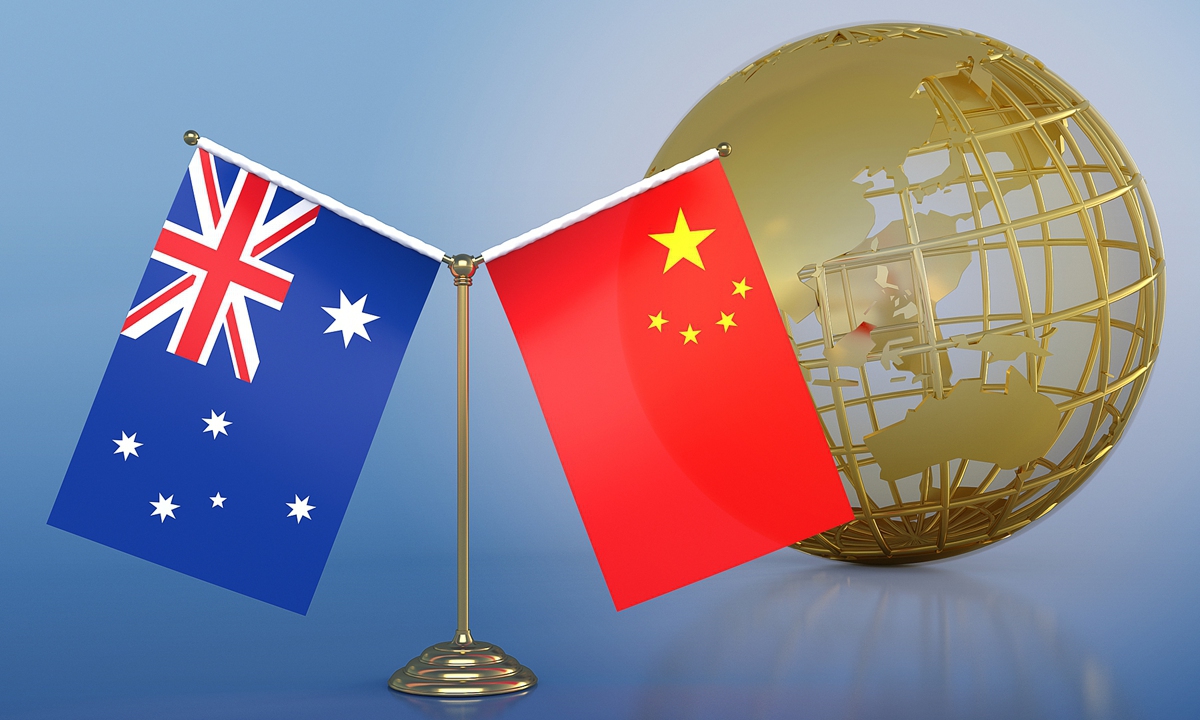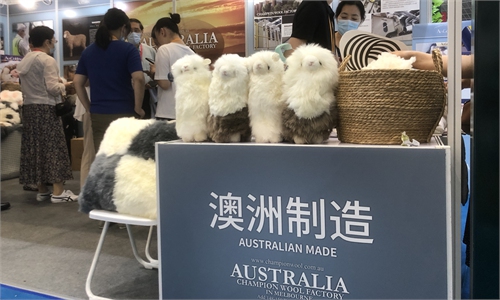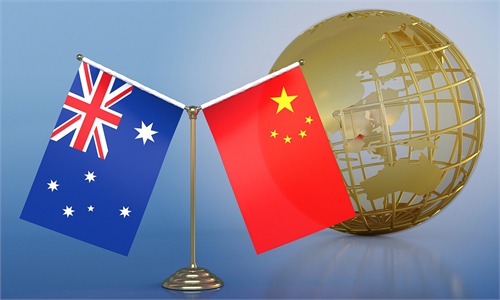
China Australia Photo: CFP
China-Australia trade recovered vigorously in the first five months of 2023, with both imports and exports showing double-digit growth, according to official data on Wednesday.
Industry insiders said the data showed improving trade ties between the two countries amid thawing bilateral relations.
In the first five months, total trade was up 19.4 percent to 672.94 billion yuan ($94.54 billion), with imports from Australia jumping 21.3 percent and exports growing 15.7 percent, according to data from the General Administration of Customs (GAC).
Experts said that the improvement reflected several factors, including frequent bilateral meetings and interactions between officials as well as businesses, which restored confidence in Australian goods among Chinese companies and consumers. It also reflected the high level of complementarity and mutual benefits in bilateral trade.
The figures came amid improving bilateral trade ties, with imports of some major Australian goods such as coal and beef resuming and picking up. Imports of other traditional goods like iron ore stayed strong.
Tang Feilong, a senior coal industry insider, told the Global Times on Wednesday that while industry data for May is not yet available, from January to April, China imported 6.3 million tons of Australian coal, mostly coking coal, amid resilient domestic demand.
The potential of China's coal imports from Australia has not yet been fully unleashed, according to analysts.
Total coal imports from Australia this year are expected to reach 100-200 billion tons, Tang said, which would be a recovery to about 50 percent of the 2020 level, before trade relations deteriorated.
Australian timber trade with China resumed in mid-May, the China Timber & Wood Products Distribution Association confirmed with the Global Times on Wednesday, noting that some Chinese buyers and Australian suppliers have already reached cooperation intention.
Bilateral relations fell to the lowest ebb in decades amid the hostile policy of the previous Australian administrations, which disrupted trade and investment as many Chinese companies diverted their attention elsewhere to reduce risks.
The situation started to change after the current Australian administration took office, and the meeting between the two countries' leaders in Bali in November 2022 reached census and set a critical tone for the improvement of bilateral relations.
The visit of Australian Trade Minister Don Farrell to China in May, the first time in four years, witnessed multiple encouraging signs, including the resumption of a landmark high-level economic meeting.
"The trade data does not lie, and the latest figures clearly tell us that the relationship between the two countries is indeed moving forward steadily," Chen Hong, president of the Chinese Association of Australian Studies, professor and director of Australian Studies Centre, East China Normal University, told the Global Times on Wednesday.
While trading in goods such as iron ore, coal and wheat with China is booming, a barley dispute is being tackled under joint efforts, and imports of hay seem to be resuming, the expert said. The two sides are persistently seeking to solve other outstanding disputes, such as the trade of lobsters, red wines, and other agricultural husbandry.
The trade data show that there is no fundamental conflict of interest between China and Australia, and their economic structures are highly complementary.
"Australia needs to seize the golden opportunity of the ongoing improvement of the bilateral relationship, and withstand external pressures from third countries with ulterior motives to disrupt and sabotage the comprehensive strategic partnership between us," Chen said.


